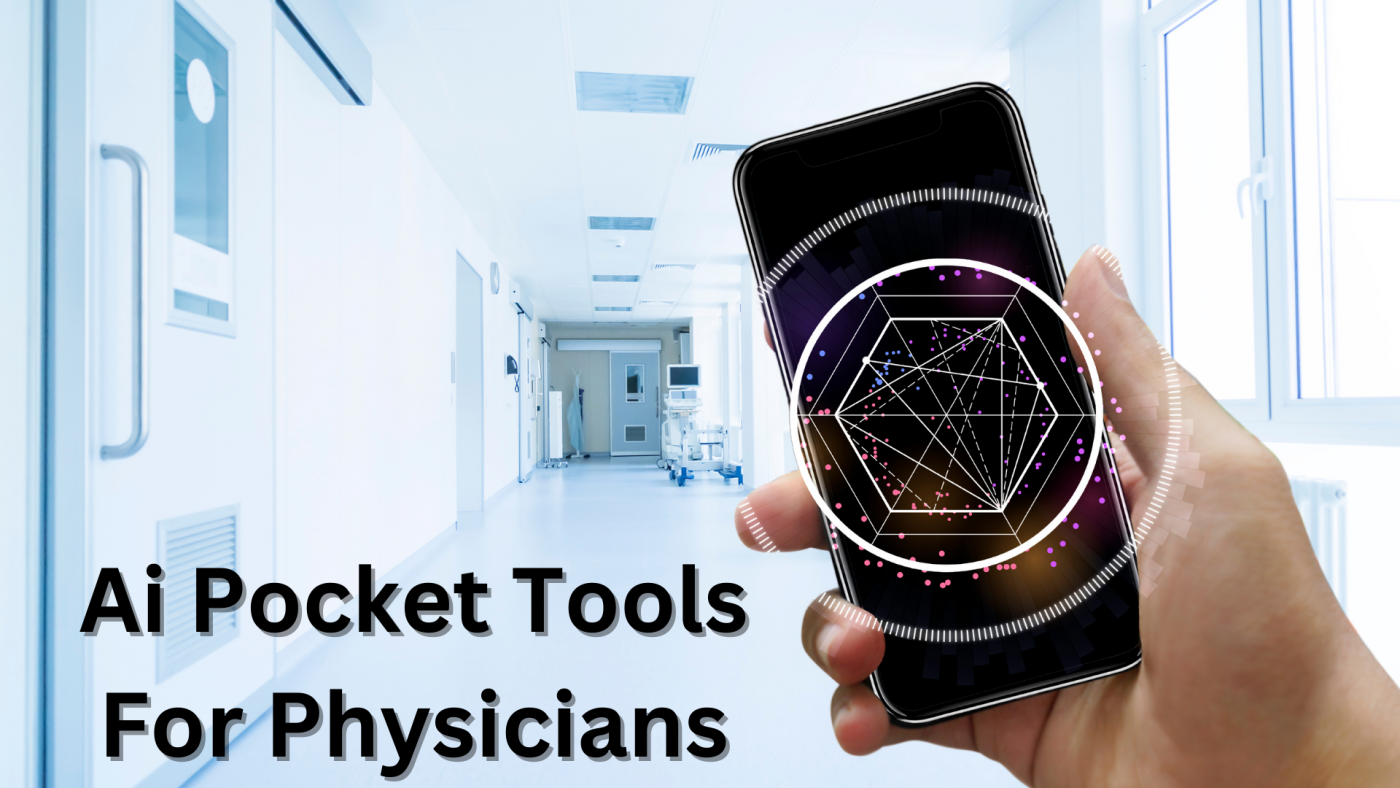Ai Pocket Tools for Physicians: Augmenting Decision Making

Author: Amina H Khalpey, PhD, Brynne Rozell BS, Zain Khalpey, MD, PhD
Artificial intelligence (AI) has the potential to revolutionize the way physicians make decisions, especially at the bedside. AI can process and analyze large amounts of data quickly and accurately, allowing doctors to make faster, more informed decisions. This tool can also help doctors identify patterns in patient data that may otherwise be missed. For example, AI can detect subtle changes in a patient’s health over time that may be indicative of a larger problem. Ai pocket tools have been developed which typically contain an AI processor, sensors, and a user interface, such as a touchscreen or voice recognition. This pocket-sized device is designed to provide users with a convenient and efficient way to complete tasks such as language translation, analyzing data, and providing personalized recommendations. With the advent of AI pocket tools, healthcare providers will be able to perform medical imaging, receive alerts for abnormal health conditions, and have access to synthesized medical data, all with the help of AI algorithms.
AI Pocket Tools for Medical Imaging:
One of the most exciting new capabilities of AI is the ability to instruct untrained individuals to acquire medical-grade images using a smartphone. With the help of AI algorithms, anyone can pop an ultrasound transducer into their smartphone and, with a little gel on its tip, instantly acquire high-quality images. The AI algorithm instructs the user to move the transducer up or down, clockwise or counterclockwise, and automatically captures the image when it meets the objective standard. This technique will greatly improve the reliability of medical imaging like ultrasounds, which are notoriously dependent on technical skill. This pocket guide will extend the ability to perform medical imaging of most parts of the body, anywhere, anytime, and by anyone, potentially reducing health inequities in remote parts of the world.
AI for Patient Notification:
Patients can already be notified by their smartwatch’s algorithm of an abnormal heart rhythm (such as atrial fibrillation). In 2023, this capability will extend to preliminary diagnoses of skin lesions, urinary tract infections, children’s ear infections, and an increasing number of common conditions that are not life-threatening. This is just the beginning of a virtual health coach that will ideally prevent conditions a person is at increased risk of manifesting, using chatbots and human coaches in the background when necessary.
AI for Clinical Tasks:
Clinicians will also be aided by AI in their daily tasks, particularly by being liberated from the job of typing medical data into a computer. This burden not only contributes to burnout among physicians, but also detracts from patient interactions. With the help of natural language processing and machine learning, synthetic notes can be created automatically from the conversation between doctors and patients at the visit or bedside. This will allow healthcare providers to spend more time with their patients and less time on administrative tasks.
AI for Remote Monitoring:
AI is already being used for remote monitoring, which is preempting the need for hospitalization for patients with Covid-19 by real-time data capture from wearable sensors. This will only increase in 2023, with the potential to avoid a large proportion of hospital stays by accurately anticipating early signs of clinical deterioration and giving healthcare providers a window to intervene.
Privacy and Security in AI Healthcare:
While AI has the potential to revolutionize healthcare, there remains a dire need to reduce bias and promote privacy and security in its application. Privacy AI computing is starting to take off with the use of strategies like federated and swarm learning, as well as with the increasing application of edge computing, which uses algorithms fully operating on the smartphone. In 2023, these strategies will be explored more fully, in a much-needed effort to not only fully investigate the potential for AI in health and medicine but also to address its potential flaws and pitfalls.
The Tool of the Future is Here Now:
The potential that AI has to revolutionize the way physicians make decisions, especially at the bedside has barely been realized yet. With the help of AI pocket tools, healthcare providers will be able to perform medical imaging, receive alerts for abnormal health conditions, and have access to synthesized medical data, all with the help of AI algorithms. While there are still challenges to be addressed, such as reducing bias and promoting privacy and security, the future of AI in healthcare looks bright and has the potential to greatly improve patient care.



